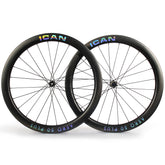Why is my circuit so bad? 9 reasons why
There's nothing worse than shifting a gear only to hear the drivetrain grinding without the chain moving into the next sprocket. If you're plagued by shifting errors, misfires, and gears that just won't do what you tell them, we have a handy guide for you.
1. Cable tension.
Most shifting problems are caused by the cable stretching and the gears becoming out of alignment. This problem causes people to play with the limit screws. If your cables are stretching, your limit screws will not change how much the shifting is out of alignment. They should have been set when the bike was originally set up and should not need to be adjusted. If your gears are not coming up properly, you will need to tighten the cable. A ¼ turn on your barrel adjuster should fix the problem.
2. Dirty cables.
Keep your cables clean and ideally lubricate them every now and then to keep them working. However, as soon as they start to drag, you should replace them with new trains. Try replacing them with quality cables and you will notice a noticeable change in shifting.
3. Alignment of the rear derailleur.
A small bump can easily throw your derailleur hanger out of balance, a small movement and your gears won't work quite as well. The derailleur hanger is designed to flex to protect your frame, so keep an eye on it. A small bend and it can be bent back, a big bend and you have to buy a new derailleur hanger. It's always worth having a spare bar for your bike.
4. Dirty chain.
Keep your chain clean and lubricated if you want to shift easily. Neglecting this maintenance can result in premature drive failure, so be careful. Keep an eye on your chain to make sure it doesn't become damaged and avoid stiff links or pins that try to come loose from the chain.
5. Outer cables of the wrong length.
Yes, cable housings keep your internal cables clean, but if they are too long you will add a lot of friction to the system. Cables that are too short can also be a problem. Pulls that are too short can result in the cable being pulled too tight.
6. Alignment of the derailleur.
Again, tap or move the derailleur. If the clamp has become loose, if it has moved while you're rattling along the road - these are all problems that mean you need to readjust the derailleur alignment.
7. Your drivetrain is worn out.
Even if you take good care of your drivetrain, it can still wear out. Check your chain with a chain tester to give you an idea of how worn it is. If you care about your drivetrain, hopefully it's just a new chain.
8. Your frame is broken.
You fell and bent or twisted the back end of your frame. If your frame has shifted, your rear derailleur has shifted too.
9. You have set it up poorly.
If you are new to bike building, you may have made a mistake. Maybe now is the time to take your bike to the experts.





